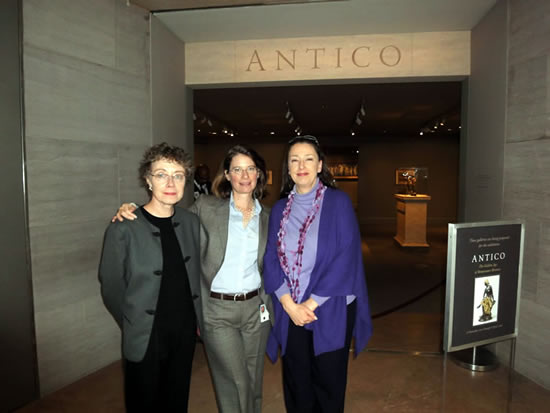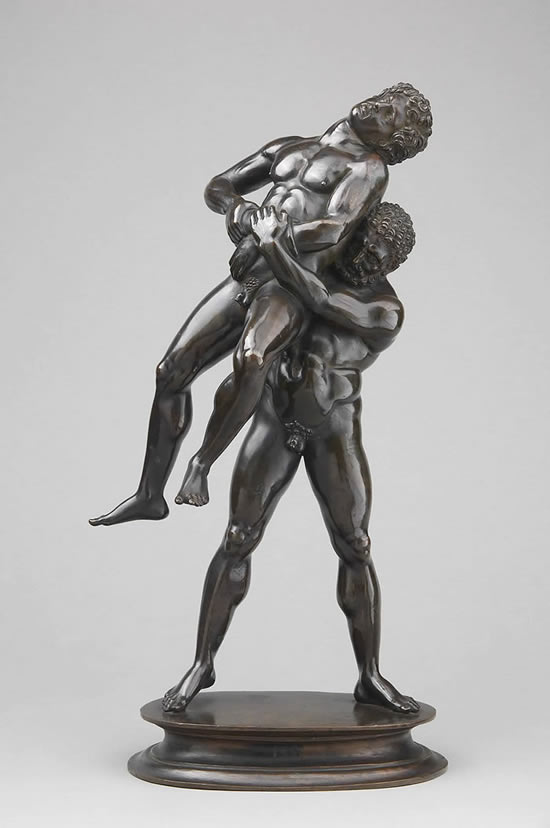A Happy Return

Claudia Kryza-Gersch, curator of Italian Sculpture at the Kunsthistorisches Museum in Vienna, collaborated on the current exhibition at the National Gallery of Art, Antico: The Golden Age of Renaissance Bronzes (November 6, 2011–April 8, 2012). It is a return to the place where her career as an art historian began 15 years ago. Alice Irvin has met her for an interview.
Tell us something about the artist who is featured in the current exhibition at the National Gallery.
Antico is the nickname of a fascinating but little-known Renaissance sculptor –whose real name is Pier Jacopo Alari de Bonacolsi. He was born around 1455 and was employed by several members of the Gonzaga, the ruling family of Mantua, as well as by the famous Isabella d’Este. Mantua, a small city in upper Italy, was famous in the 15th century for its cultivated court, where artists like Andrea Mantegna worked. Antico’s assumed name can be interpreted as a reflection of his artistic vision, for he wanted to recreate the consummate beauty of antique sculpture. And he succeeded in doing so with unparalleled perfection, both in style and subject matter. Today, this may not seem so exciting, for there were many artists doing the same thing, but: they all came after him. It is often said that the quintessential intention of the Renaissance was to revive the art of Antiquity and in the field of sculpture there was no other artist who embodied this ambition better than Antico. His oeuvre represents the most faithful, uncompromising, and accurate recreation of antique sculpture of the epoch. He can also be credited with inventing the genre of the technically superbly executed small bronze statuette, in which ardent collectors still delight today.
Can you name some of the present day collectors?
Of course. Perhaps someone you are familiar with: the late Robert H. Smith, a wellknown Washington developer and philanthropist. He was one of the most distinguished collectors of small bronzes. His collection also included a statuette by Antico, whose works can only rarely be found in private hands – it can be seen in the exhibition, which was supported by his family’s Foundation. Probably the most important collector of bronzes today is J. Tomilson Hill in New York, who is also supporting the second venue of the exhibition at the Frick Collection from May 1 to July 29, 2012.
Of the 38 sculptures in the exhibition, 9 are on loan from the Kunsthistorisches Museum in Vienna. How did you acquire these treasures?
When the ruling family of Mantua, the Gonzaga, became extinct in 1627, their spectacular art collection was offered for sale. A large part was bought by King Charles I of England. After his execution in 1649, Cromwell’s republican regime sold the king’s collection. One man who took advantage of this extraordinary opportunity was Archduke Leopold Wilhelm of Habsburg, the youngest son of Emperor Ferdinand II. He was governor of the Spanish Netherlands and a passionate collector. The Kunsthistorisches Museum owes as much to him as to Emperor Rudolf II, although the latter is much better known today. The Archduke brought his collection back to Vienna and upon his death left it to his nephew, Emperor Leopold I. This inheritance in combination with other acquisitions makes our museum the world’s greatest repository of autograph statuettes, busts, and medals by Antico.
How was it possible that you could loan so many of these treasures?
Well, it truly was the perfect moment for this exhibition, since the Kunstkammer – that is what we call our sculpture department in Vienna - is currently undergoing a major renovation and is thus completely closed to the public. This means that we were able to be rather generous with our loans. When the Kunstkammer reopens in December 2012 an exhibition of this type will not be possible again.
The Kunsthistorisches Museum is the place where you have been working for 9 years, but you started your career in Washington, isn’t that right?
Yes, it is. It was here at the National Gallery that I began my career as a professional art historian. I received my Ph.D. from the University in Vienna in December 1996 and in January of the following year I started as an intern in the Sculpture Department. Half a year later I was hired as a research assistant by the Gallery’s renowned Center for Advanced Study in the Visual Arts. These first professional opportunities opened the doors to my selection as a Mellon Fellow in the sculpture Department of the Metropolitan Museum of Art in New York and later as a Kress Fellow at the Walters Art Museum in Baltimore, where I was involved in the reinstallation of the Renaissance and Baroque Galleries. My time in the U.S. was an amazing experience and it feels marvelous to be back and to work again with my former mentors and colleagues who have all become great friends.

